A “compact automation” is a mechatronic system that performs a whole series of consecutive production steps autonomously. “Compact” refers to the small dimensions, in the millimeter and centimeter range, of the products to be processed. Designing and constructing such systems is one of the core activities of the Austrian machine manufacturer STIWA. Its modular system LTM-CI has been optimized for small parts assembly. Linear and rotating micromotors from FAULHABER perform key tasks in these systems.
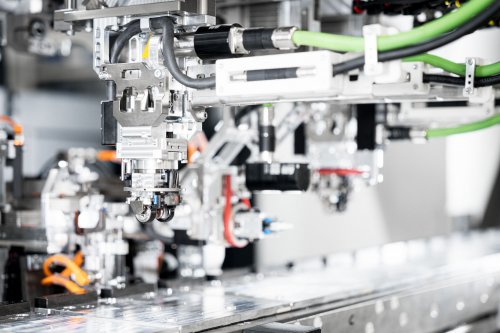
The valve consists of just a few components and is only eight millimeters long. It is part of the anti-lock braking system of a large automotive supplier and is required in seven-digit quantities every year. Production must run with a takt time of half a second in order to cope with this volume. Of course, this happens fully automatically and at such a speed that the human eye can barely keep up with the individual assembly steps.
Small parts in a narrow Alpine valley
The individual parts are first fed from storage containers, separated using a shaker and correctly positioned on a conveyor system ready for the first manufacturing step. The components are then transported to the respective station where delicate grippers pick them up and join them together or process them in some other way. If you watch the machine go about its work, you will witness a fascinating choreography, which combines smoothly flowing transport of the conveyor belts and the rapid, jerky movements of the grippers into an intricate, rhythmic dance.
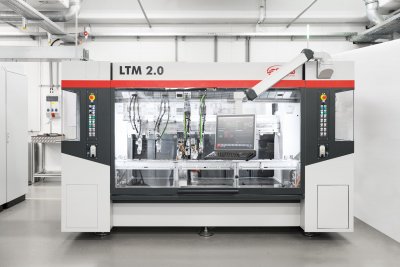
The machine that executes these complex movements in precise synchronization is a compact automation of the LTM-CI series from STIWA. It is designed for products with a spatial diagonal of up to 30 millimeters – and is itself the result of drastic miniaturization, as Roland Schiermayr, Departmental Head of Automation Research and Development, explains: “A customer in the west of Austria produces dampers for a well-known furniture retailer that needs millions of these parts every year. The company wanted to buy a new production machine. The existing machine was 10 meters long – for the production of small components measuring just a few centimeters in length, this was simply too much for the production site in a narrow Alpine valley. This was the impetus for us to fully utilize all miniaturization possibilities.”
The result of the development phase was the above-mentioned compact machine, or more precisely an automation platform which, depending on the configuration and equipment fitted, manages with a length of 3 to 4 meters. A rigidly linked transport system forms the basis, and the other system components depend on the needs and specifications of the customer. “We can integrate up to 22 function modules, each measuring 90 millimeters in width, for different work steps,” explains Christian Mersnik, who was involved in development from day one. “These functions include, for example, pick-and-place, laser welding with up to five degrees of freedom, screw insertion, press-in operations, labeling as well as testing and measuring processes.”
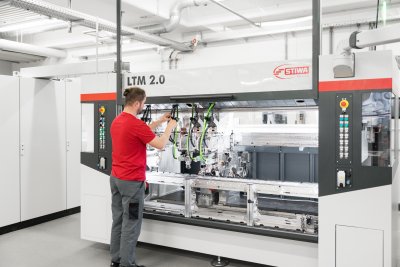
Power density that is unique worldwide
The compact automation has been well received by the customers. They appreciate, among other things, the uniform, smooth movements without impacts or vibration, which guarantees a stable process; one regular customer reports that the system runs “like a sewing machine”. With the LTM-CI, the cycle times have been reduced to almost just half a second, which brings with it a significant leap in productivity.
The drives used in the actuators inside the machine make a major contribution to the smooth movement as well as the high speed. In earlier generations, electric motors of a completely different size class were used; for the compact automation, the developers discovered the products from FAULHABER. In the LTM-CI, the LM 1247 linear motor now plays a key role. It performs its task at up to twenty points in the system, including stopper units – sliders that interrupt the flow of material – and grippers. One particular strength of the FAULHABER linear motors is their extremely high speed. This drive also delivers an enormous thrust: At just 12.5 mm wide and 19.1 mm high, it produces a continuous force of 3.6 Newtons. “When operating at full power, it can even manage 10.7 Newtons,” points out Roland Schiermayr. “There is no other small linear motor with this power density available on the market anywhere in the world.”
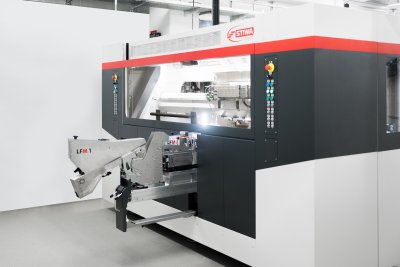
Longevity is what makes the real difference
The engineers from STIWA heap equal praise on the brushless motor of the BX4 2250 series. In the portal handling of the compact automation, this motor drives the swivel units that move the tools or components to a specific position. When selecting a suitable drive, in addition to the typical strengths of the FAULHABER motors, the availability of an accessory part was also an important factor, as Christian Mersnik explains: “At this point in the system, we require an extremely high level of precision and repeatability. This is why it was an important argument for us that FAULHABER was able to deliver this motor with a matching multiturn absolute encoder. The signals from this encoder are necessary to achieve the high production quality and for quality assurance.”
For STIWA, however, it is the longevity and long-term reliability of all components that make the real difference. This is because the company guarantees its compact automation customers fault-free operation of no less than 60 million strokes. This huge number must therefore also be achieved by all moving parts – and this, of course, includes the motors. “We subject our own parts as well as additionally purchased components to endurance tests,” explains Roland Schiermayr. “In these tests, we attempt to destroy the parts through wear and unfavorable conditions. Only those parts that survive the endurance tests are installed in the machines. The motors from FAULHABER have shown that they can meet such extreme requirements. They help us to achieve our own peak values with minimum space requirements and the shortest cycle times.”
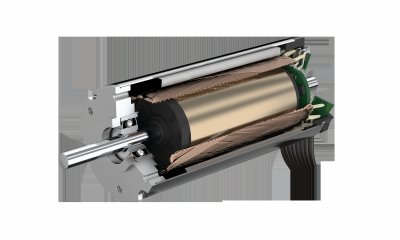
Company box: The drive experts from Schönaich
FAULHABER is specialized in the development, production and deployment of high-precision miniaturized and miniature drive systems, servo components and drive electronics with up to 200 watts of output power. This includes putting into effect customer-specific packaged solutions as well as an extensive range of standard products, such as Brushless Motors, DC-Micromotors, Encoders and Motion Controllers. The FAULHABER trademark is recognised worldwide as a symbol of high quality and reliability in complex and demanding application areas, such as medical technology, factory automation, precision optics, telecommunications, aviation and aerospace, and robotics. From the powerful DC-motor with a continuous torque of 200 mNm to the filigree micro drive with an outer diameter of 1.9 mm, the FAULHABER standard range can be combined in more than 25 million different ways to create the optimum drive system for a particular application. At the same time, this technological construction kit is the basis for modifications which allow to configure special versions to meet the specific needs of customers.
www.faulhaber.com
